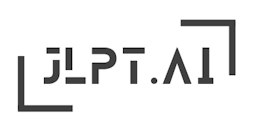

N1
音読み:kai
訓読み:kadowakasu
カイkai
かどわか.すkadowakasu
kidnap; abduct
Imagine a person using their hand (拳) to grab and abduct someone, symbolizing the act of kidnapping.
The kanji '拐' is a less frequently encountered character in JLPT materials, mainly appearing in the N1 level. It is important to learn its meaning and readings to understand related vocabulary in the exam.
彼は子供を拐して逃げようとした。
He tried to kidnap the child and escape.
かれはこどもをかどわかしてにげようとした。
kare wa kodomo o kadowakashite nigeyou to shita.
拐点は法律で罰せられる行為です。
Kidnapping is an act punishable by law.
かいてんはほうりつでばっされるこういです。
kaiten wa houritsu de bassareru koui desu.
拐帯を締め付けると、怪我が悪化する可能性がある。
There is a possibility of worsening the injury by tightening the bandage too much.
かいたいをしめつけると、けががあっかするかのうせいがある。
kaitai o shimetsukeru to, kega ga akka suru kanousei ga aru.